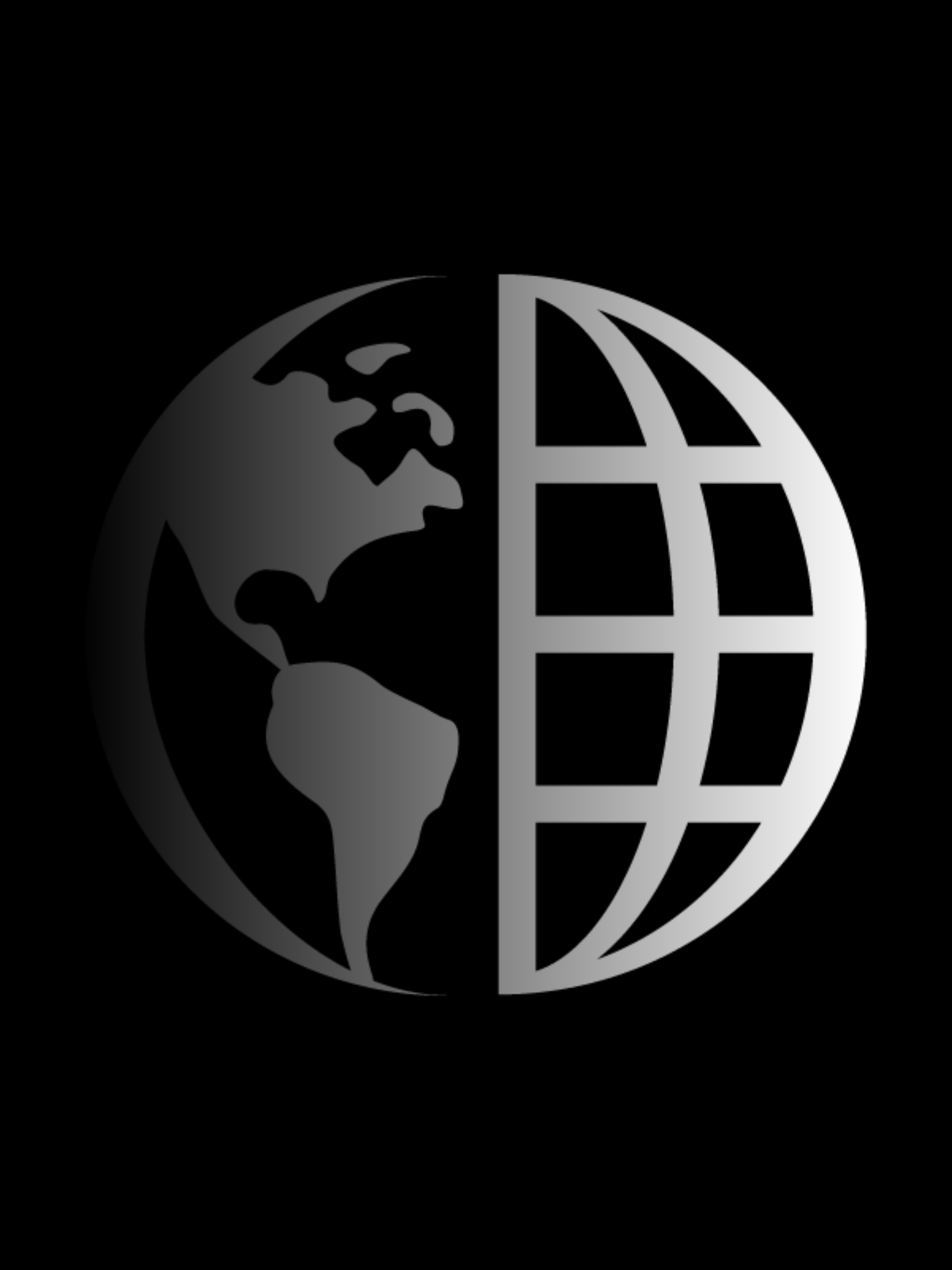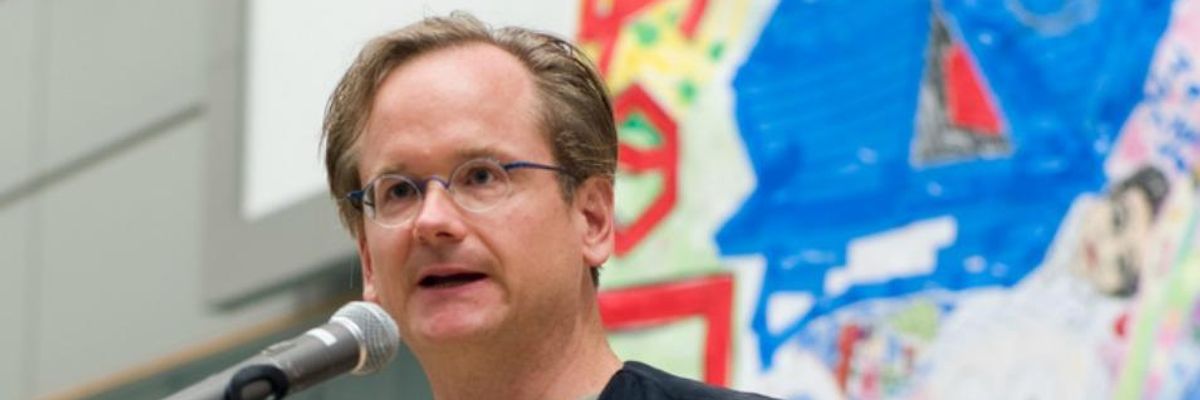

SUBSCRIBE TO OUR FREE NEWSLETTER
Daily news & progressive opinion—funded by the people, not the corporations—delivered straight to your inbox.
5
#000000
#FFFFFF
To donate by check, phone, or other method, see our More Ways to Give page.


Daily news & progressive opinion—funded by the people, not the corporations—delivered straight to your inbox.

Mayday founder Lawrence Lessig. (photo: flickr / cc / Joi Ito)
The Mayday PAC, a progressive campaign finance reform project aimed at reducing the influence of a wealthy few in U.S. politics, met an ambitious $5 million goal on July 4.
When he launched the project earlier this year, Harvard Law professor and Internet activist Lawrence Lessig advised people to "embrace the irony" of needing to raise big money in order to overthrow its influence in politics.
Between matching funds and an additional $2 million raised in May, the Mayday PAC--known as the "SuperPAC to end all SuperPACs"--now has more than $12 million to spend on midterm elections, backing candidates who support the aim of reforming how U.S. political campaigns are financed.
Unlike most SuperPACs, which are funded by a small number of super-rich donors and corporations who critics say wield disproportionate influence over the political process, the Mayday PAC received donations from more than 52,000 individuals, the majority of whom contributed $100 or less.
"The pundits say 'America doesn't care about this issue,'" Lessig wrote in a public letter to supporters over the weekend. "This is America caring. And this is America demanding something more. Ideally now. But if we have to wait till 2016, then ok: Because by 2016, we're going to elect a Congress that will fundamentally change how campaigns are funded. You have guaranteed it."
The Mayday PAC will now turn its attention toward electing candidates who support legislative proposals to reform the campaign finance system. Those candidates will be announced mid-month, and will be selected based on the following objectives:
First, we must select districts where a victory would be both surprising, and understood to be tied to this reform. We are not looking for easy victories; nor are we looking for races in which different issues compete, and would make identifying the reason for victory difficult. We are looking for districts in which a victory would signal that conventional wisdom was wrong: that voters, that is, could be mobilized on the basis of this issue enough to dislodge even dominant incumbents.
Second, we must select a sufficiently wide range of districts so as to provide enough diversity to make valid the inferences we need to draw about other districts. Our campaigns will establish a baseline of attitudes before and after our intervention; we will track the effectiveness of those interventions to "move the needle" of attitudes related to reform. And we'll experiment with a wide range of techniques for engaging nontraditional voters to support candidates tied to reform.
_____________________
Donald Trump’s attacks on democracy, justice, and a free press are escalating — putting everything we stand for at risk. We believe a better world is possible, but we can’t get there without your support. Common Dreams stands apart. We answer only to you — our readers, activists, and changemakers — not to billionaires or corporations. Our independence allows us to cover the vital stories that others won’t, spotlighting movements for peace, equality, and human rights. Right now, our work faces unprecedented challenges. Misinformation is spreading, journalists are under attack, and financial pressures are mounting. As a reader-supported, nonprofit newsroom, your support is crucial to keep this journalism alive. Whatever you can give — $10, $25, or $100 — helps us stay strong and responsive when the world needs us most. Together, we’ll continue to build the independent, courageous journalism our movement relies on. Thank you for being part of this community. |
The Mayday PAC, a progressive campaign finance reform project aimed at reducing the influence of a wealthy few in U.S. politics, met an ambitious $5 million goal on July 4.
When he launched the project earlier this year, Harvard Law professor and Internet activist Lawrence Lessig advised people to "embrace the irony" of needing to raise big money in order to overthrow its influence in politics.
Between matching funds and an additional $2 million raised in May, the Mayday PAC--known as the "SuperPAC to end all SuperPACs"--now has more than $12 million to spend on midterm elections, backing candidates who support the aim of reforming how U.S. political campaigns are financed.
Unlike most SuperPACs, which are funded by a small number of super-rich donors and corporations who critics say wield disproportionate influence over the political process, the Mayday PAC received donations from more than 52,000 individuals, the majority of whom contributed $100 or less.
"The pundits say 'America doesn't care about this issue,'" Lessig wrote in a public letter to supporters over the weekend. "This is America caring. And this is America demanding something more. Ideally now. But if we have to wait till 2016, then ok: Because by 2016, we're going to elect a Congress that will fundamentally change how campaigns are funded. You have guaranteed it."
The Mayday PAC will now turn its attention toward electing candidates who support legislative proposals to reform the campaign finance system. Those candidates will be announced mid-month, and will be selected based on the following objectives:
First, we must select districts where a victory would be both surprising, and understood to be tied to this reform. We are not looking for easy victories; nor are we looking for races in which different issues compete, and would make identifying the reason for victory difficult. We are looking for districts in which a victory would signal that conventional wisdom was wrong: that voters, that is, could be mobilized on the basis of this issue enough to dislodge even dominant incumbents.
Second, we must select a sufficiently wide range of districts so as to provide enough diversity to make valid the inferences we need to draw about other districts. Our campaigns will establish a baseline of attitudes before and after our intervention; we will track the effectiveness of those interventions to "move the needle" of attitudes related to reform. And we'll experiment with a wide range of techniques for engaging nontraditional voters to support candidates tied to reform.
_____________________
The Mayday PAC, a progressive campaign finance reform project aimed at reducing the influence of a wealthy few in U.S. politics, met an ambitious $5 million goal on July 4.
When he launched the project earlier this year, Harvard Law professor and Internet activist Lawrence Lessig advised people to "embrace the irony" of needing to raise big money in order to overthrow its influence in politics.
Between matching funds and an additional $2 million raised in May, the Mayday PAC--known as the "SuperPAC to end all SuperPACs"--now has more than $12 million to spend on midterm elections, backing candidates who support the aim of reforming how U.S. political campaigns are financed.
Unlike most SuperPACs, which are funded by a small number of super-rich donors and corporations who critics say wield disproportionate influence over the political process, the Mayday PAC received donations from more than 52,000 individuals, the majority of whom contributed $100 or less.
"The pundits say 'America doesn't care about this issue,'" Lessig wrote in a public letter to supporters over the weekend. "This is America caring. And this is America demanding something more. Ideally now. But if we have to wait till 2016, then ok: Because by 2016, we're going to elect a Congress that will fundamentally change how campaigns are funded. You have guaranteed it."
The Mayday PAC will now turn its attention toward electing candidates who support legislative proposals to reform the campaign finance system. Those candidates will be announced mid-month, and will be selected based on the following objectives:
First, we must select districts where a victory would be both surprising, and understood to be tied to this reform. We are not looking for easy victories; nor are we looking for races in which different issues compete, and would make identifying the reason for victory difficult. We are looking for districts in which a victory would signal that conventional wisdom was wrong: that voters, that is, could be mobilized on the basis of this issue enough to dislodge even dominant incumbents.
Second, we must select a sufficiently wide range of districts so as to provide enough diversity to make valid the inferences we need to draw about other districts. Our campaigns will establish a baseline of attitudes before and after our intervention; we will track the effectiveness of those interventions to "move the needle" of attitudes related to reform. And we'll experiment with a wide range of techniques for engaging nontraditional voters to support candidates tied to reform.
_____________________